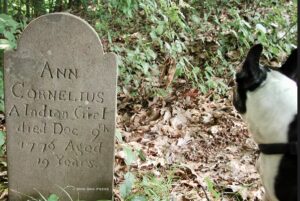Shine The Light: Life Stories Along CT Freedom Trail, Amistad
“Those that don't got it, can't show it. Those that got it, can't hide it.”
Zora Neale Hurston
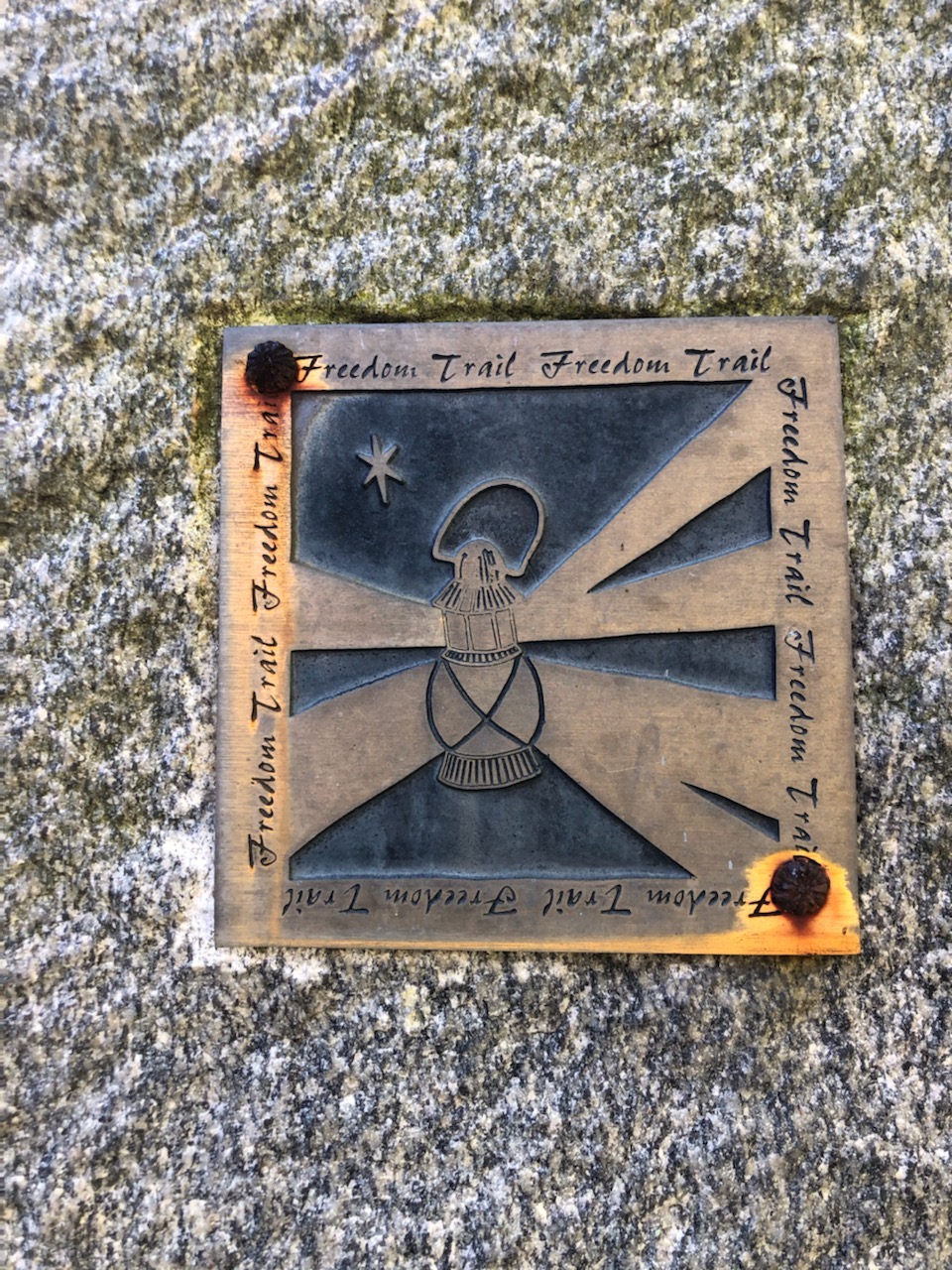
Light shining out from a lantern. The logo and marker that denotes a site on the Connecticut Freedom Trail. (See below for location and why it is well worth visiting.
Light. Determination. Integrity in words and deeds. Commitment. Freedom. The flags are on display out front at home, but this July 4th will focus on humanity, connectiveness. Because in school, never knew there were tribes in Connecticut, artifacts, history, people to share stories. Alive and well and here. Likewise about slavery, river ports such as Middletown's involvement. So. Read, travel local, learn.
Stories inform, illuminate, inspire, educate, provoke, captivate. The Amistad is a touchstone for a remarkable one intertwining law, language, persistence, incredible courage. This weekend, will once again view Amistad by Steven Spielberg. Then, New Haven to step aboard the replica of the Amistad; Hartford for the Old State House. Walk, think, reflect.
Sketched portraits of the Amistad captives as they awaited trial in New Haven.https://t.co/kIuwbEd4af
— Beinecke Library (@BeineckeLibrary) May 13, 2022
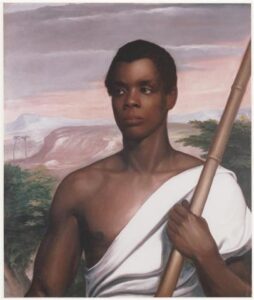
The Amistad Story: Cinque Lives Here
This exhibition chronicles the events of the 1839 revolt and subsequent legal case that was one of the defining moments in the anti-slavery movement. Nathaniel Jocelyn's painting of Sengbe Pieh / Joseph Cinque is among the most important portraits in American art. New Haven Museum linked to this image.
Today’s date in New Haven #history: April 29, 1840 — The #Amistad trial opened at the Circuit Court at New Haven with Judge Smith Thompson presiding. Thompson eventually affirmed the decision of the District Court, setting the stage for an epic showdown at the U.S. Supreme Court. pic.twitter.com/jL5LF6UlIJ
— DFA New Haven (@DFANewHaven) April 30, 2022
Welcoming the Amistad back to home port in #NewHaven. The holiday weekend is a great time to visit the ship at Long Wharf, meet the amazing team members & also see the exhibits at @NewHavenMuseum – pic.twitter.com/ONardBccYE
— Michael Piscitelli (@mjpisci) June 30, 2022
The Underground Railroad and Freedom Trail sites worth exploring in Connecticut can shed light on facets of human stories. How some people stood up, extended a hand, provided shelter and connections. Spoke up, took action.
The Connecticut Freedom Trail documents and designates sites that “embody the struggle toward freedom and human dignity, celebrate the accomplishments of the state's African American community and promote heritage tourism.” The trail officially opened in 1996. Track stories and connect the travels across the state and through time — or just walk and learn more about people's choices in life against all odds.
John Brown, Harriet Beecher Stowe, the Lyman Homestead. The Amistad. The Charles W. Morgan whaling vessel.
Colchester, Hartford, Windsor. Hebron, Norwich, Meriden, New London. New Haven, Groton, Griswold. Naugatuck, Norfolk, Old Saybrook, Westport. Barkhamsted, Bridgeport, Danbury. North Canaan, Torrington, Litchfield, Greenwich, East Haddam. Manchester, Old Lyme. Vernon, Plainville, Canterbury. Deep River, Oxford, Brooklyn, Hampton. Glastonbury, North Stonington. Middletown, Stratford, Farmington, Bloomfield. Points in between, relevance to the region and world events.
Should current events cause despair and/or rage, take a walk and find stories of human courage and commitment to others to regain balance. Stop in any town and ask at the library or historical society, town hall, chamber of commerce, college, coffee shop for places that are preserved because of people who fought side by side against the odds and oppression, battled injustice. Sometimes alone. With words, fiery speeches, writing, work. Set an example.
Other places honor lives of tenacious persistence.
Venture Smith (birth name: Broteer Furro) (c. 1729 – 1805) documented his life in his own narrative.
Have you registered for our July Conversation at Noon on the Connecticut Freedom Trail The Importance of Venture Smith? Register for FREE here: https://t.co/pzN7Q0CwAS pic.twitter.com/yOjNsBfPil
— Connecticut's Old State House (@CTOldStateHouse) July 2, 2022
After a visit or visits, may travelers find inspiration to do the same.
The lantern seen above is located on a stone pillar at West Burying Ground (Washington Street Cemetery) Washington and Vine Streets, Middletown.
“To the rear of this cemetery are the graves of local African Americans, including Fanny Beman, the mother of Reverend Amos Beman, one of Connecticut's best-known African American abolitionist leaders of the 19th century. There are also graves here of men who fought in the Connecticut 29th Regiment and other African American units of the Civil War. Among them is James Powers, who is listed on the Civil War monument located on the Green at South Main Street near the Benjamin Douglas House.”
There are world-famous sites (Harriet Beecher Stowe in Hartford) and Jackie Robinson Park of Fame, Richmond Hill Avenue and West Main Street, Stamford.
“Jackie Robinson (1919-1972) was the first black player in Major League Baseball, breaking the color line in an historic game on April 15, 1947. For nearly twenty years, Robinson lived with his family in Stamford. In a downtown park named for the famous player, stands a life-size bronze statue of Robinson with an engraved base bearing the words “COURAGE,” “CONFIDENCE” and “PERSEVERANCE.” He represented tolerance, educational opportunity and the confidence that inspires personal achievement and success. The Jackie Robinson Park of Fame is dedicated to an American hero and a role model who also happened to be a legendary sports figure.”
Marian Anderson Studio, Danbury Museum & Historical Society, 43 Main Street, Danbury.
“Marian Anderson (1897-1993) was a world-renowned opera singer and the first African American artist to perform at the Metropolitan Opera in New York City. Perhaps her most famous concert took place on the steps of the Lincoln Memorial in 1939, after she was denied permission to sing at Constitution Hall. The concert was attended by 75,000 people. In 1940, Anderson and her husband purchased their property in Danbury, which became known as “Marianna Farm.” Marian Anderson’s husband, architect Orpheus H. Fisher (1899-1986), designed and built her a rehearsal studio, featuring a curved ceiling to enhance acoustics. The studio was donated to the Danbury Museum & Historical Society and moved to the museum’s Main Street property in 1999. The studio was restored and opened to the public in 2004, featuring many artifacts from Anderson’s life. Marian Anderson was inducted into the Connecticut Women’s Hall of Fame in 1994.”
James Pharmacy, 2 Pennywise Lane, Old Saybrook.
“Anna Louise James (1886-1977), licensed in Connecticut as a pharmacist in 1911, owned and operated her pharmacy from 1922 until 1967, when she retired. James was the first African American woman and one of the first women to become a pharmacist in the state. She was also among the first women who registered to vote when women's suffrage was passed in 1920. In 1974, the Old Saybrook Veterans of Foreign Wars gave James its Citizen of the Year award. This site is also the birthplace of James' niece, Ann Lane Petry (1908-1997), a Harlem Renaissance writer who became the first black woman writer with book sales topping a million copies for her novel The Street. Ann Petry was inducted into the Connecticut Women’s Hall of Fame in 1994. The James Pharmacy building is on the National Register of Historic Places.”
Soldiers and Sailors Monument, Bushnell Park, 31 Pratt St., Hartford.
“The Soldiers and Sailors Monument (Memorial Arch) honors those from Hartford who served in the Civil War. A marker noting the contributions of African Americans in the war has been added to the monument. A sculpture of a black man breaking the chains of bondage and holding a book symbolizing education is featured on the monument. On display inside the nearby State Capitol are two banners that were used by Connecticut's all-black 29th Regiment.”
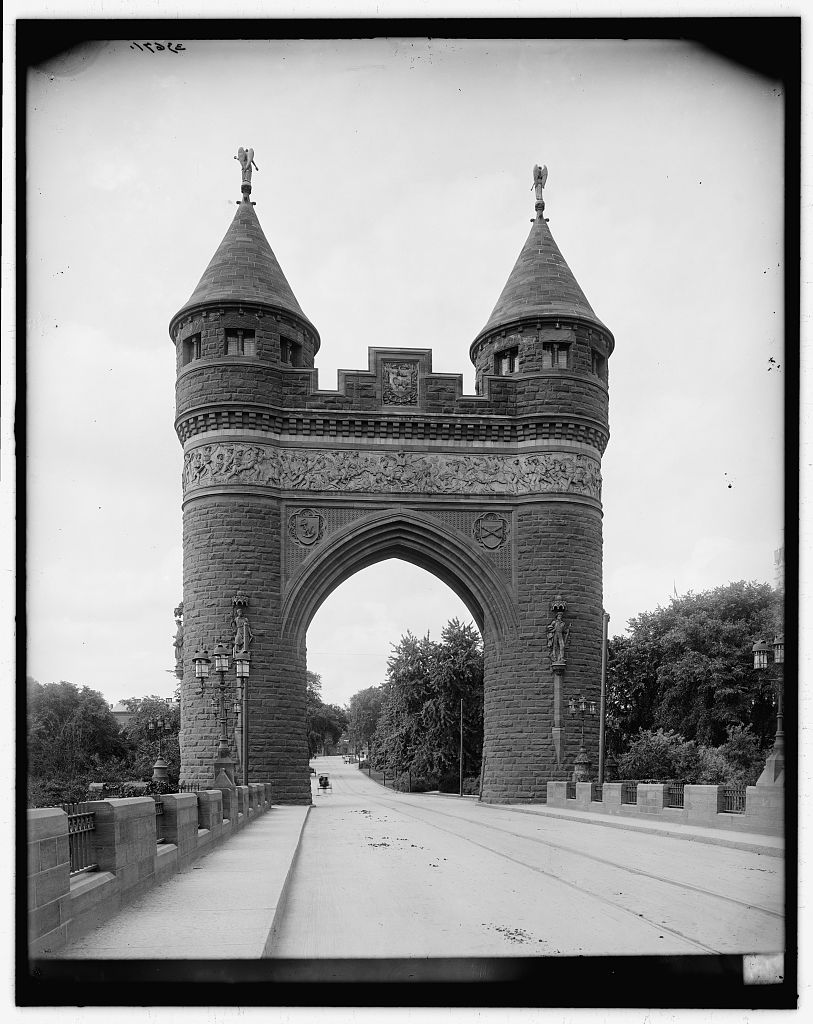
Soldiers' and Sailors' Memorial Arch, Hartford, Conn. Detroit Publishing Co., publisher. Library of Congress
Some less well known, and yet, each is quite amazing.
Martha Minerva Franklin Gravesite, Walnut Grove Cemetery, 817 Old Colony Rd., Meriden.
“Martha Minerva Franklin (1870-1968) was born in New Haven. She attended high school in Meriden and graduated as the only student of color in her class. Not accepted to Connecticut nursing schools because of the color of her skin, she attended the Women’s Hospital Training School for Nurses in Philadelphia. She graduated in 1897 – once again, as the only African American in her class. In 1908, she founded the National Association for Colored Graduate Nurses (NACGN) in New York City, because at the time, black nurses were not accepted into the American Nursing Association (ANA). Franklin worked tirelessly as the NACGN’s first president to break down the color line in the field of nursing. After years of dedication, Franklin saw her goal of integration realized when the NACGN merged with the ANA in 1951. She was posthumously inducted into the ANA Hall of Fame in 1976 and the Connecticut Women’s Hall of Fame in 2009. Her name was not added to the Franklin family gravestone until 1998, after a concerned nurse discovered that there was no recognition of her interment there. With an anonymous donation, a plaque was created and dedicated in a special ceremony at the Meriden site. The location is C-West, lot 298. Enter the South gate and follow the drive to the left. Section C-West will be on the right. The Franklin family plot is halfway up the hill and stands out from other markers because of the plaque on the stone.”
Hempstead Historic District. Area surrounding 11 Hempstead St., New London.
“Located in the center of New London and surrounding the 17th century Joshua Hempsted House (see Underground Railroad section), the Hempstead Historic District includes houses that were purchased by free African Americans in the 1840s. These properties were sold by Hempsted descendants, who were abolitionists, to Savillion Haley, who believed that African Americans deserved adequate housing like whites had. African Americans of colonial New London had already lived in this area and, with these new purchases and later home building by African Americans, organizations important to the community's interests developed. One of these is Shiloh Baptist Church located on Garvin Street, which is named for the early 20th century African American leader, Albert Garvin. The Joshua Hempsted House is one of two historic houses in the district open to the public. Owned by Connecticut Landmarks, it contains a family archive of early abolitionist papers. The district is on the National Register of Historic Places.”
Also notable is a sign installed in 2019 at Harbor Park by the Connecticut River at Middletown–to commemorate the river port as a Site of Memory recognized by the United Nations Educational, Scientific and Cultural Organization (UNSECO).
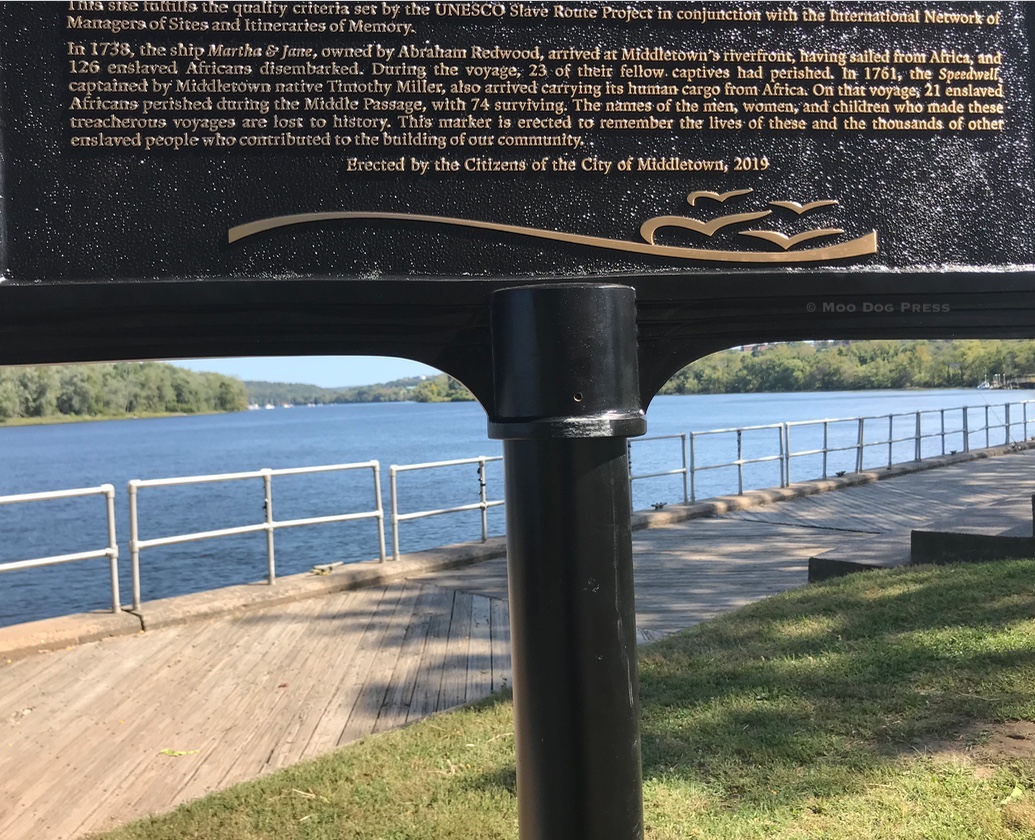
After a guided walk in 2019, a visit to Harbor Park by the Connecticut River as the remnants of the crowd were dispersing. A new sign commemorates the river port as a Site of Memory recognized by the United Nations Educational, Scientific and Cultural Organization (UNSECO). Here’s a portion of the why:
“In 1738, the ship Martha & Jane, owned by Abraham Redwood, arrived at Middletown’s riverfront, having sailed from Africa, and 126 enslaved Africans disembarked… During the voyage, 23 of their fellow captives had perished…
.…to remember the lives of these and the thousands of other enslaved people who contributed to the building of our community.”
“I have the nerve to walk my own way, however hard, in my search for reality, rather than climb upon the rattling wagon of wishful illusions.”
– Letter from Zora Neale Hurston to Countee Cullen
Note: Zora Neale Hurston's quote opened this story, and readers who wish to learn more about her original life lived to the fullest, here is a link to an official site about her work and writing. Editor's note: This story has been updated to include Venture Smith event, July 26 at noon (see above). Free, open to the public; virtual.

